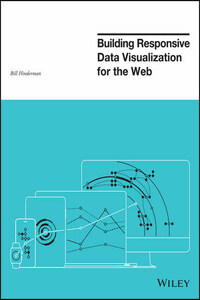Before discussing responsive data design, it is important to set the stage with a brief overview of how we got here. The evolution of the mobile web does not exist in a vacuum; it is built upon the foundation of 25 years of the Internet’s growth.
In this chapter, we’ll touch upon the beginning of the consumer Internet, and how it became commercialized. We will then move on to the shift from desktop computers to mobile devices as the primary way to access the web.
Finally, you will gain an understanding for what the mobile web’s landscape looks like today by exploring how the screens currently used came to be, and what will become their logical successors.
Plus, you will end up with great conversation starters for the world’s nerdiest cocktail party.
Think about the device you have in your pocket or in your hand right now. You have an absolutely godlike amount of computing power inside a device the size, shape, and fragility of a toaster pastry. Not only can it do miraculous things like calculate your age from a picture of your belly button, but it can also talk to all of the other devices on the planet and shame you for missing your morning run.
Back in the 1950s, though, computers were massive room-filling calculators that couldn’t say anything to one another. Computer science labs across the United States, Great Britain, and France were working on that “couldn’t say anything to one another” part, though. Throughout that decade, and into the 1960s, packet networking systems (what humans call the Internet) had been contracted by the United States Department of Defense. The first ARPANET (what would become the first network to use the Internet Protocol) link was established between the University of California, Los Angeles (UCLA) and the Stanford Research Institute on October 29, 1969. The messages went as follows:
“We set up a telephone connection between us and the guys at SRI …” Kleinrock … said in an interview: “We typed the L and we asked on the phone, ‘Do you see the L?’”
“Yes, we see the L,” came the response.
We typed the O, and we asked, “Do you see the O.”
“Yes, we see the O.” Then we typed the G, and the system crashed.
From Gregory Gromov’s Roads and Crossroads of the Internet History (www.netvalley.com/cgi-bin/intval/net_history.pl)
Access to the ARPANET was expanded in 1981 with the creation of the Computer Science Network. A year later, the Internet protocol suite (TCP/IP) became the standard networking protocol on that network.
The Web’s History
So, the history of the Internet begins in the late 1950s when those big computers couldn’t talk, and it takes 19 years for the first conversation. So, naturally, let’s begin our lesson in 1980, with the history of the web.
The web is a way of accessing information over the Internet. That is, it’s an information-sharing model that is built on top of the Internet, using a standard hypertext transfer protocol (HTTP).
Tim Berners-Lee was an English-born contractor working at the European Organization for Nuclear Research (CERN) in Switzerland. In 1980, he became fascinated with the concept of hypertext. In the simplest terms, hypertext is text displayed in a digital form that references and provides linked access to other text. Berners-Lee built ENQUIRE, a hypertext database system to catalog people and software models. If you’ve ever used a wiki, like Wikipedia, you can grasp the core of what he was building with ENQUIRE. It was a database of hypertext information within which other related information was accessible through hyperlinks.
Early Days
By the mid-eighties, Berners-Lee had left and returned to CERN, still working on a solution to a seemingly intractable problem: Physicists around the world lacked a way to communicate data uniformly. In 1984, TCP/IP protocols were installed on a few machines at CERN, making it, at the time, the largest collection of things that make the Internet the Internet in all of Europe.
In 1989, Berners-Lee wrote a proposal for a “large hypertext database with typed links.” He began creating this database on a NeXT computer workstation, and called the project the World Wide Web.
By the end of 1990, the World Wide Web was beginning to take shape as something similar to what we know today. Hypertext Transfer Protocol (HTTP) and Hypertext Markup Language (HTML) were in a working state, and the first HTTP server software and web server went online. Accompanying these were the first web pages, which described the World Wide Web project itself. Figure 1-1 shows the earliest known website. The first web browser also came online, as a project housed at CERN.
Figure 1-1: The first website, now housed at http://info.cern.ch/hypertext/WWW/TheProject.html
A pivotal moment came on August 6, 1991. Berners-Lee posted a short summary of what was then called the “World Wide Web” project on the alt.hypertext newsgroup. The summary’s opening was deceptively simple, considering its significance:








